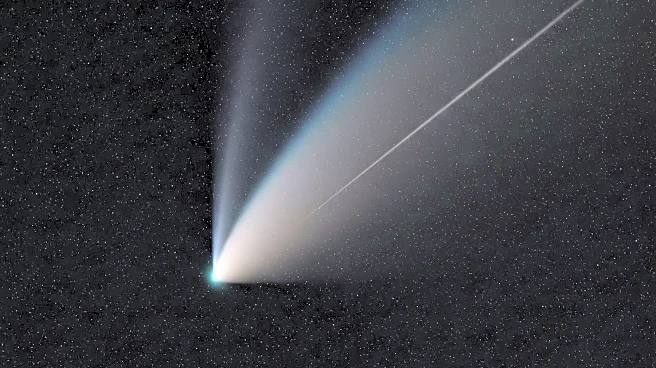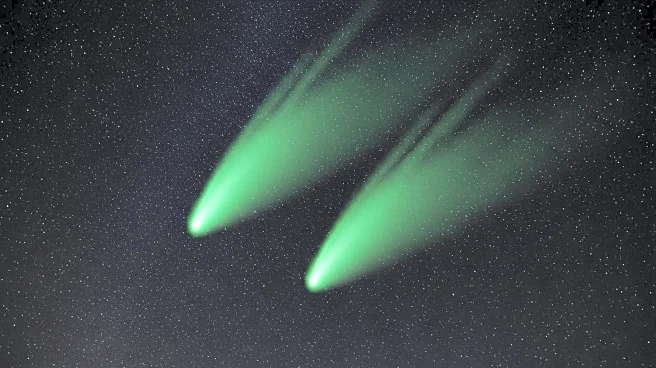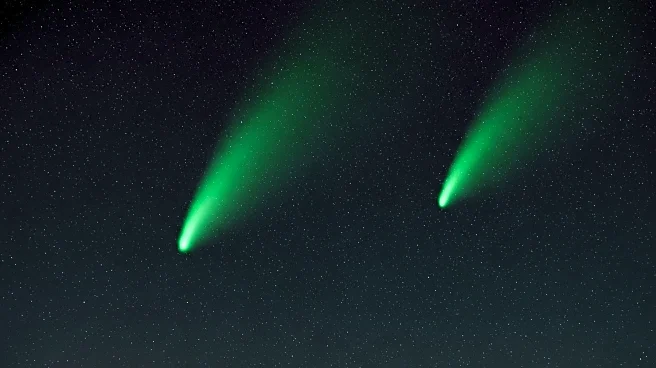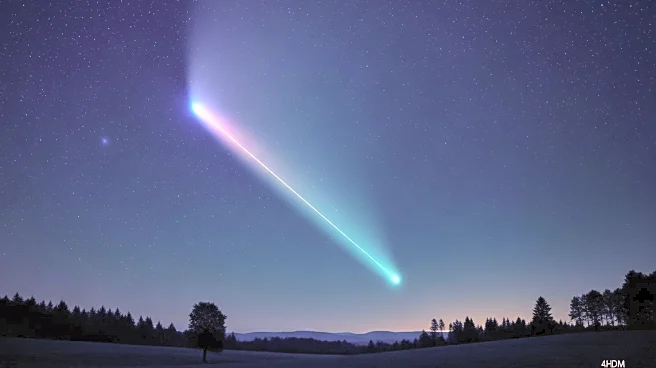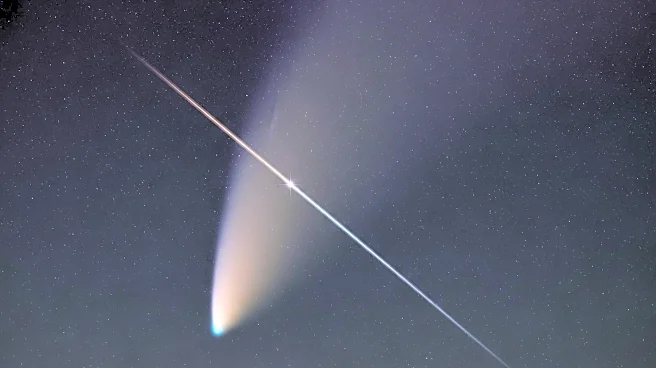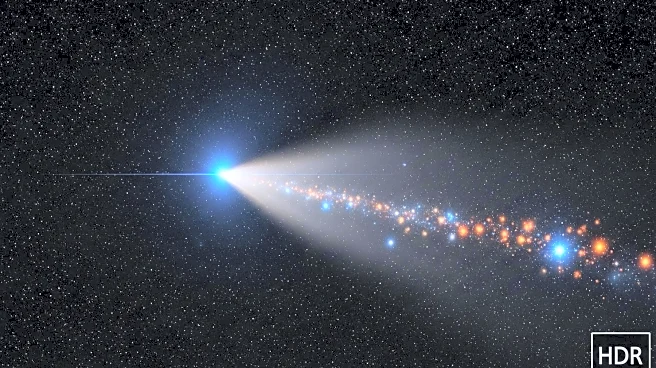What's Happening?
Comet C/2025 A6 (Lemmon) is rapidly brightening as it approaches its closest point to the sun, leading to excitement that it may be visible to the naked eye in mid-late October. The comet's brightness is due to the vaporization of its icy deposits, creating a gaseous coma and tail that reflects sunlight. Comet Lemmon has brightened from magnitude +21.5 to approximately +5.7, potentially making it visible under perfect dark sky conditions. The comet will be positioned high above the northeastern horizon in the predawn hours of early October, transitioning to the evening sky by October 21.
Why It's Important?
Comet Lemmon's brightening offers a rare opportunity for skywatchers to observe a comet potentially visible to the naked eye. This event highlights the dynamic nature of comets as they interact with solar energy, providing insights into their composition and behavior. The comet's visibility may inspire interest in astronomy and encourage amateur astronomers to engage in skywatching activities. Additionally, the event underscores the importance of tracking near-Earth objects, contributing to scientific understanding of celestial phenomena. Comet Lemmon's appearance may also lead to increased public interest in space exploration and observation.
What's Next?
As Comet Lemmon continues to brighten, skywatchers are advised to observe it in the predawn sky, transitioning to the evening sky by October 21. The comet's visibility may improve as it approaches its closest point to Earth, offering opportunities for photography and observation. Amateur astronomers and enthusiasts are encouraged to use binoculars or telescopes to enhance their viewing experience. The scientific community will continue to monitor Comet Lemmon's trajectory and brightness, potentially leading to new discoveries about its properties. The event may also inspire educational initiatives and public engagement in astronomy.


